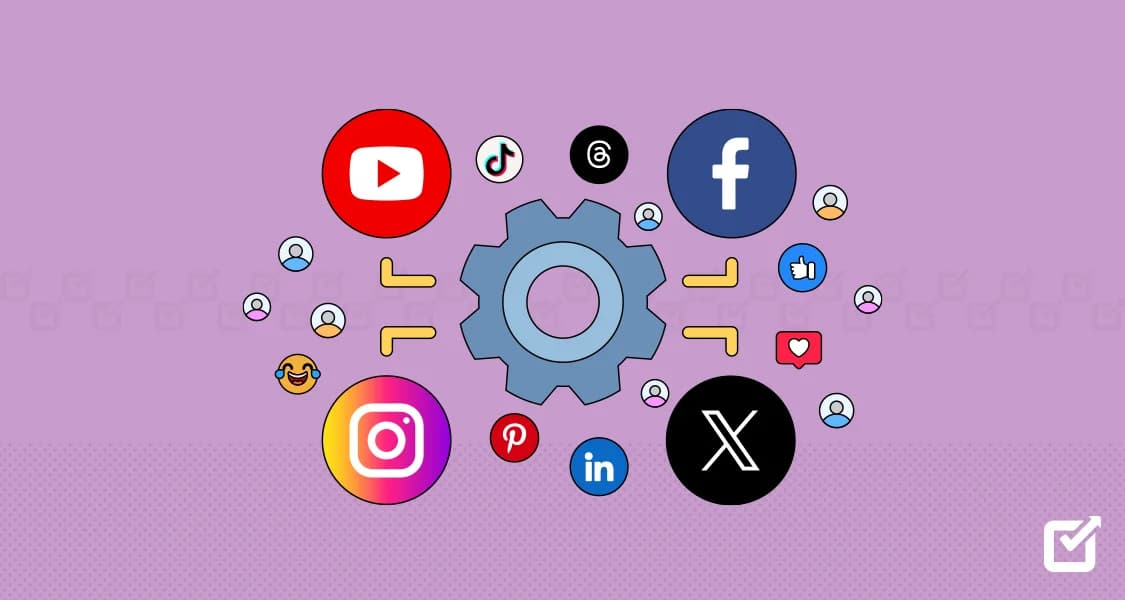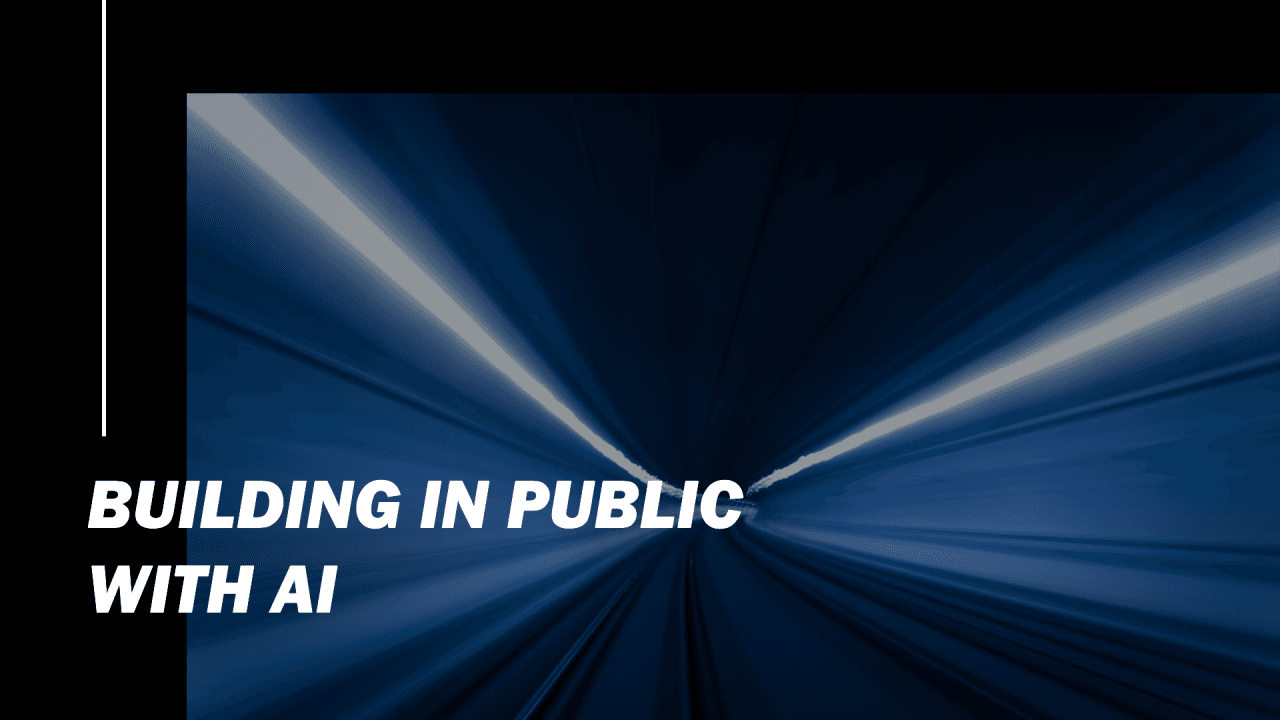AiAlly: Revolutionizing Work with AI Employees

Lawrence Liu
8/20/2024

AI Virtual Employees: Efficiency Multipliers for Small Teams - In-depth Technical Innovation and Practice of Muyan Low-Code Platform
1. Introduction
In today's rapidly evolving technological world, small teams often face the challenge of limited resources but unlimited demands. To address this dilemma, we at Muyan Technology have developed a revolutionary solution - the AI Virtual Employee System. This system is not just a simple AI Employee, but an intelligent system capable of truly understanding, learning, and executing complex tasks, designed to be a powerful aide and efficiency multiplier for small teams.
2. Project Background and Motivation
Muyan Technology is a lean team of 5 people, including 3 expert-level developers, 1 finance and administrative manager, and 1 sales person. As a small team, we deeply understand the challenges brought by resource limitations. We urgently needed a way to enhance the team's work efficiency and output without increasing labor costs.
Existing AI solutions in the market, such as various Agents and AI chatbots, still have shortcomings in knowledge base integration, personalization, and independently completing tasks (such as producing documents, system data, data insights, etc.). This prompted us to start envisioning a more advanced AI virtual employee system that better meets our needs.
3. Technology Selection
In terms of technology selection, we chose Grails, PostgreSQL, and Ant Design as our core technology stack. This choice was based on the following reasons:
- Firstly, these technologies are exactly what our existing Muyan low-code platform uses. This means we can fully leverage our existing technological accumulation and infrastructure.
- Secondly, our low-code platform has already implemented AI interface integration with OpenAI and Claude, which provides strong support for our rapid development of the AI virtual employee system.
- Finally, we already have an AI Chatbox on our frontend, which provides a good starting point for further development and improvement of the AI virtual employee's interaction interface.
This technology choice allows us to quickly iterate and develop on the basis of the existing platform, greatly accelerating the progress of the project.
4. System Architecture and Core Components
Our AI virtual employee system consists of the following core components:
4.1 Virtual Employee Manager
Responsible for managing and coordinating the work of various AI virtual employees.
4.2 Knowledge Graph Engine (Based on JSONB)
Utilizing PostgreSQL's JSONB functionality to build a flexible and efficient knowledge graph, providing a rich knowledge base for AI virtual employees.
4.3 Dialogue Management System
Implementing intelligent, coherent multi-turn dialogues based on existing Conversation and ChatMessage models.
4.4 Task Planning and Execution Engine
Capable of understanding complex tasks, breaking them down into executable steps, and supervising the execution process.
4.5 Tool Integration Interface
Allowing AI virtual employees to call various external tools and APIs, expanding their range of capabilities.
4.6 Learning and Optimization Module
Continuously improving the performance of AI virtual employees through ongoing learning and feedback.
4.7 Security and Compliance Checker
Ensuring that the behavior of AI virtual employees complies with security standards and relevant regulations.
These components collaborate through carefully designed interfaces to form a highly integrated and powerful system. For example, when a user poses a question, the dialogue management system first understands the user's intent, then calls the knowledge graph engine to retrieve relevant information, the task planning engine formulates a solution, and finally executes specific operations through the tool integration interface. The entire process is coordinated by the virtual employee manager and supervised by the security and compliance checker.
5. Data Model Design
Here is our system's ER diagram, showing the main entities and their relationships:
+------------------+ +------------------+ +------------------+
| Conversation | | ChatMessage | | VirtualEmployee |
+------------------+ +------------------+ +------------------+
| id |1 *| id | | id |
| tenant |<----| tenant | | tenant |
| extInfo [JSONB] | | extInfo [JSONB] | | name |
+------------------+ +------------------+ | type |
| attributes [JSONB]
| skills [JSONB] |
| personality [JSONB]
+------------------+ +------------------+ | knowledgeDomains |
| KnowledgeNode | |KnowledgeRelation | | [List<Long>] |
+------------------+ | ship | +------------------+
| id | +------------------+ |
| tenant | | id | |
| type |0..*<| tenant |0..* |
| properties [JSONB]|--->| sourceId | |
+------------------+ | targetId | |
^ | type | |
| | properties [JSONB] |
|0..* +------------------+ |
|
+------------------+ +------------------+ |
| Task | |AiConversation | |
+------------------+ | Feedback | |
| id | +------------------+ |
| tenant | | id | |
| type | | tenant | |
| status | | conversationId | |
| parameters [JSONB] | messageId | |
| assignedEmployeeId|<---| userId | |
| conversations |0..*>| feedbackType | |
| [List<Long>] | | rating | |
+------------------+ | content | |
^ | context [JSONB] | |
| | createdAt | |
|0..* | updatedAt | |
| +------------------+ |
| ^ |
| |1 |
| | |
| +------------------+ |
+-------------->| Conversation |<-------------+
+------------------+
This ER diagram shows the core entities in our system and their relationships. We can see that the system is built around several main entities: Conversation, ChatMessage, VirtualEmployee, and KnowledgeNode. Below, we will explain in detail the role of each entity and its relationship with others.
Our data model design fully utilizes PostgreSQL's advanced features, especially the JSONB type, to achieve maximum flexibility and performance. The main data models include:
5.1 Conversation and ChatMessage
These two existing models have been extended with new functionalities such as conversation context information and emotion analysis results by expanding their extInfo JSONB field.
5.2 VirtualEmployee
Contains basic information about virtual employees, skills, personality traits, etc., using JSONB to store flexible attributes.
5.3 KnowledgeNode and KnowledgeRelationship
Form the basic units of the knowledge graph, using JSONB to store diverse attributes and relationships.
5.4 Task
Describes tasks to be executed, including task type, status, parameters, and other information.
5.5 AiConversationFeedback
Stores user feedback on AI responses for continuous system improvement.
Using the JSONB type allows us to store complex nested data structures while maintaining query efficiency. For example, we can easily store and retrieve diverse skill sets of virtual employees or complex parameter structures of tasks.
Additionally, we have added a tenant field to all models, implementing full multi-tenant support and laying the foundation for future SaaS deployment.
6. Core Functionality Implementation
6.1 Knowledge Graph Engine
Our knowledge graph engine is implemented based on the KnowledgeNode and KnowledgeRelationship tables. By cleverly utilizing PostgreSQL's JSONB query capabilities, we have achieved efficient graph traversal and semantic search. For example, we can quickly find all knowledge nodes related to a specific topic or trace complex relationships between knowledge.
6.2 Enhanced Dialogue System
We have extended the existing Conversation and ChatMessage processing logic to implement context-aware dialogue capabilities. The system can now track long-term conversation context, understand implicit references, and even capture changes in user emotions. This greatly improves the naturalness of interaction with AI virtual employees.
6.3 Task Execution
The task execution module can transform high-level user instructions into specific execution steps. It first analyzes task requirements, then queries the knowledge graph for relevant information, formulates an execution plan, and finally calls appropriate tools or APIs to complete the task. The entire process is thoroughly logged for subsequent optimization and troubleshooting.
7. Query and Operation Strategies
7.1 Knowledge Graph Queries
We have implemented a flexible set of knowledge graph query interfaces that support complex queries based on entities and relationships. For example, we can easily implement complex queries like "find all projects related to Python and sort them by difficulty." Additionally, we have implemented multi-hop relationship queries and path analysis, allowing the system to discover deep connections between knowledge.
7.2 Virtual Employee Selection
The system dynamically selects the most suitable virtual employee based on user needs and conversation context. This process considers multiple factors such as the virtual employee's professional domain, skill level, and personality traits. We use a complex matching algorithm that considers not only skill matching but also past interaction history and user feedback.
7.3 Dialogue Processing
Our dialogue processing strategy implements multi-turn dialogue management, capable of maintaining complex dialogue states and contexts. The system supports intent recognition and entity extraction, greatly enhancing dialogue understanding capabilities. For example, when a user says "How is its performance?", the system can correctly understand that "it" refers to a specific technology or product discussed earlier.
7.4 Task Execution
The task execution strategy includes task decomposition, resource allocation, and progress monitoring. The system can break down complex tasks into a series of subtasks and assign the most suitable virtual employee for each subtask. During execution, the system monitors progress in real-time and promptly handles exceptional situations to ensure smooth task completion.
8. User Interface and Interaction Design
Our user interface design focuses on simplicity and functionality, mainly including the following parts:
8.1 Main Interface Layout
- Left sidebar: Contains the main function menu of the system.
- Central area: Serves as the main work area, displaying data lists, details, etc.
- Bottom right corner: Houses the AI Employee's floating window, always ready.
8.2 AI Employee Interaction Flow
- User clicks the AI Employee icon in the bottom right corner to open the dialogue window.
- The system automatically creates a new conversation session or resumes the previous one.
- User can input questions or select predefined tasks.
- AI Employee processes the request and provides a response.
- User can continue the dialogue or request specific actions.
8.3 Multi-turn Interaction and Continuous Optimization
- Unified dialogue interface supporting display and interaction of text, images, and files.
- Code block display with syntax highlighting, and copy and expand/collapse functions.
- "Optimize" and "Retry" buttons next to each AI response, allowing users to request AI to improve answers or try again.
- 👍👎 buttons for quick feedback.
- Users can edit any message, including AI replies, and the system will use the edited content as new context.
- Task management features, including displaying current task name, button to create new tasks, and a simple task step list.
- "Save Checkpoint" and "Load Checkpoint" buttons, allowing saving and restoring conversation states.
This design is not only intuitive and easy to use but also provides powerful support for deep interaction between users and AI virtual employees.
9. API Design
We have designed a comprehensive set of APIs to support various functions of the AI virtual employee system:
9.1 Session Management API
GET /assistant/conversation: Get or create an AI Employee session.
9.2 Dialogue Interaction API
POST /assistant/reAsk: Send a new message or re-ask.
9.3 Dialogue Control API
POST /assistant/barrier: Create a barrier in the conversation to separate contexts.
9.4 Virtual Employee Management API
GET /virtual-employee: Get a list of available virtual employees.
POST /virtual-employee/{id}/assign: Assign a virtual employee to the current session.
9.5 Knowledge Graph Query API
POST /knowledge-graph/query: Execute a knowledge graph query.
9.6 Task Execution API
POST /task/execute: Execute a specific task.
9.7 User Feedback API
POST /feedback: Submit user feedback.
GET /feedback/conversation/{conversationId}: Get feedback for a specific conversation.
The design of these APIs considers flexibility, scalability, and security. We use RESTful design principles to ensure API consistency and ease of use. At the same time, we have also implemented appropriate rate limiting and authentication mechanisms to protect the API from abuse.
10. Innovation Points and Technical Challenges
Our AI virtual employee system demonstrates innovation in multiple aspects:
10.1 Innovation Points
a) Deep Knowledge Base Integration: Our knowledge graph engine not only stores information but also understands complex relationships between knowledge, enabling AI virtual employees to perform deep reasoning.
b) High Personalization: Each AI virtual employee has unique "personality" and expertise, capable of adjusting interaction style according to different scenarios.
c) Powerful Task Completion Capability: The system can not only understand complex instructions but also independently plan and execute multi-step tasks.
d) Seamless Integration with Low-Code Platform: AI virtual employees can directly operate our low-code platform, achieving full-process automation from requirement analysis to code generation.
10.2 Technical Challenges
During development, we also encountered some technical challenges:
a) Implementing Accurate Knowledge Graph Queries: Facing a complex knowledge network, how to quickly and accurately retrieve relevant information is a major challenge. We solved this problem by optimizing query algorithms and indexing strategies. b) Maintaining Context Coherence in Multi-turn Dialogues: Maintaining dialogue coherence during long interactions is very difficult. We developed a complex context management system that can intelligently maintain and update dialogue states. c) Ensuring Reliability and Security of Task Execution: AI autonomously executing tasks may bring risks. To address this, we implemented multi-level security check mechanisms and developed detailed logging and rollback systems.
11. Security and Data Protection
Ensuring the security of the system and user data is our top priority. We have taken the following measures:
11.1 Authentication and Authorization
Implement robust multi-factor authentication mechanisms and use fine-grained permission control.
11.2 Data Encryption
All sensitive data is encrypted during transmission and storage to ensure data confidentiality.
11.3 Access Control
Implement role-based access control (RBAC) to ensure users can only access data and functions they have permission for.
11.4 Security Audit
Regularly conduct security audits and vulnerability scans, using a combination of automated tools and manual reviews.
11.5 Data Backup and Recovery
Implement a comprehensive data backup strategy to ensure quick data recovery in case of accidents.
11.6 AI Model Security
Pay special attention to the training process of AI models to ensure no sensitive information is leaked or biased outputs are produced.
11.7 Regulatory Compliance
System design fully considers the requirements of data protection regulations such as GDPR to ensure compliance.
12. Performance Optimization
To ensure the system can maintain efficient operation when facing large-scale concurrent requests, we have taken the following optimization measures:
12.1 Indexing Strategy
Create GIN indexes for the extInfo fields of Conversation and ChatMessage, and the attributes field of VirtualEmployee. For example:
CREATE INDEX idx_conversation_ext_info ON conversation USING GIN (ext_info jsonb_path_ops);
CREATE INDEX idx_chat_message_ext_info ON chat_message USING GIN (ext_info jsonb_path_ops);
CREATE INDEX idx_virtual_employee_attributes ON virtual_employee USING GIN (attributes jsonb_path_ops);
These indexes greatly improve the query performance based on JSON fields.
12.2 Query Optimization
Use EXPLAIN ANALYZE to analyze and optimize complex queries. Use materialized views to cache results of frequently used knowledge graph queries.
12.3 Concurrency Handling
Implement efficient connection pool management. Use asynchronous processing and message queues to handle long-running tasks. Adopt multi-level caching strategies, including memory caching and distributed caching. Implement intelligent load balancing strategies to ensure requests are evenly distributed to available resources.
13. Scalability and Maintainability
To ensure the system can adapt to future demand growth and changes, we have made the following designs in terms of scalability and maintainability:
13.1 Plugin System
Designed a flexible plugin interface that allows easy extension of virtual employee capabilities. Plugins can add new skills, integrate external services, or implement domain-specific functionalities. The configuration and state of plugins are stored in the attributes JSONB field of VirtualEmployee.
13.2 Multi-tenant Support
Considered multi-tenant requirements from the ground up, using the tenant field to achieve data isolation and automatically applying tenant filtering in all queries.
13.3 Modular Architecture
The entire system is broken down into multiple independent but collaborative modules, such as the knowledge graph engine, dialogue management system, etc. This modular design makes the system easier to maintain and upgrade.
13.4 Configuration Management
Implemented a central configuration management system that allows dynamic adjustment of system parameters without restarting services.
13.5 Logging and Monitoring
Implemented comprehensive logging and real-time monitoring systems to facilitate problem diagnosis and performance optimization.
14. Practical Application Cases
Our AI virtual employee system played an important role in the development process of the Muyan low-code platform. Here's a specific application case: In the development of the low-code platform, our AI virtual employees were able to:
- Understand development requirements and conduct preliminary analysis
- Automatically generate system design solutions that meet the requirements
- Directly create corresponding models, forms, and workflows on the low-code platform based on the design
- Generate necessary custom code
- Execute automated tests and generate test reports
- Write technical documentation and user manuals
This process fully connected all stages from requirements to launch, greatly improving development efficiency. According to our preliminary data, after using AI virtual employees, the team's work efficiency increased by 1 to 2 times or more. For example, a feature module that originally took a week to complete can now be finished in 2-3 days. More importantly, AI virtual employees not only improved speed but also enhanced code quality and consistency. They can consistently follow best practices, reducing human errors.
15. Future Outlook and Optimization Plans
Looking ahead, we have a grand vision: to develop our AI virtual employee system into a comprehensive AI employee library platform. This platform will integrate best practices from various industries while allowing users to customize their company's knowledge base. We believe such a platform can bring significant cost reduction and efficiency improvements to various industries. We believe that AI will fundamentally change the way software development and project management work. In the near future, AI will not only be a developer's assistant but will become an indispensable "member" of the team, capable of independently handling various stages from requirement analysis to code writing, testing, and deployment.
Near-term optimization plans include:
15.1 Dialogue Quality Improvement
- Implement more advanced natural language processing models
- Enhance contextual understanding capabilities
- Improve personalized interaction experiences
15.2 Knowledge Graph Enhancement
- Develop more efficient automated knowledge extraction algorithms
- Implement cross-domain knowledge association
- Add knowledge graph visualization tools
15.3 Task Execution Capability Improvement
- Enhance the ability to decompose and plan complex tasks
- Improve the ability to handle exceptional situations
- Implement more detailed task progress tracking and reporting
15.4 User Experience Optimization
- Develop a smarter virtual employee recommendation system
- Optimize the dialogue interface to provide more intuitive interaction methods
- Implement personalized learning curves to adapt to different users' habits
15.5 System Integration and Extension
- Develop more integration plugins with mainstream development tools and platforms
- Provide more flexible APIs to facilitate third-party developers in extending system functionalities
- Enhance collaboration capabilities with other AI services
16. Project Management and Best Practices
In the process of developing this system, we fully utilized AI to advance the project. Our approaches include:
a) Using AI for requirement analysis and task decomposition b) Utilizing AI to generate preliminary design solutions and code frameworks c) Leveraging AI for code review and optimization d) Using AI to assist in writing test cases and documentation
We found that the accuracy of the knowledge base and regular feedback and learning are crucial for improving the effectiveness of AI employees. We established a continuous learning loop: summarizing the team's experiences with AI interactions daily, regularly updating the knowledge base, and adjusting AI behavior based on feedback. Some best practices worth sharing include:
- Always maintain human supervision: Although AI capabilities are powerful, human judgment and creativity are still irreplaceable.
- Encourage team members to collaborate with AI: We found that team members who actively interact with AI tend to gain the most benefits.
- Regular evaluation and adjustment: We evaluate AI performance monthly and adjust usage strategies accordingly.
17. Conclusion
The AI virtual employee system represents the future of software development and project management. By combining AI efficiency with human creativity, we can greatly enhance the productivity of small teams. Our system not only improves efficiency but also enhances work quality, providing more space for innovation. For small teams, this system is particularly significant. It enables small teams to take on projects that originally required more manpower, gaining an advantage in the competitive market. We encourage every team and individual to explore the potential applications of AI in their work. The future is here, and by embracing change and working hand in hand with AI, we can stay ahead in this rapidly changing world.
Early Access Pricing: Limited Time Offer!
Boost your team's productivity with AI employees
Lock in our lowest price now. As we add more features and capabilities, prices will increase.
Deposit $19.9 now to get 50% off the regular price of a lifetime subscription.
Don't wait - the future of work is calling. Will you answer?
System Design Update
We are excited to announce a major upgrade to our AI Employee System. Check out our latest system design to see how we've further enhanced the capabilities and efficiency of AI employees.
Related Posts

Aimee: Your AI Social Media Manager - Exciting Progress Update from AiAlly
Explore the latest progress of AiAlly's AI social media manager, Aimee. Learn about our early adopter program, Aimee's technical advantages, and how to get ahead in AI-driven marketing.

AiAlly: Revolutionizing Work with AI Employees through Build in Public
Explore how AiAlly is developing a revolutionary AI employee system through Build in Public. Join our early adopter program and help define the future of AI-driven work.

AiAlly: Revolutionizing Work with AI Employees
Discover how AiAlly is transforming the workplace with AI employees. Learn about our innovative platform, early adoption benefits, and how AI can dramatically improve your work efficiency.